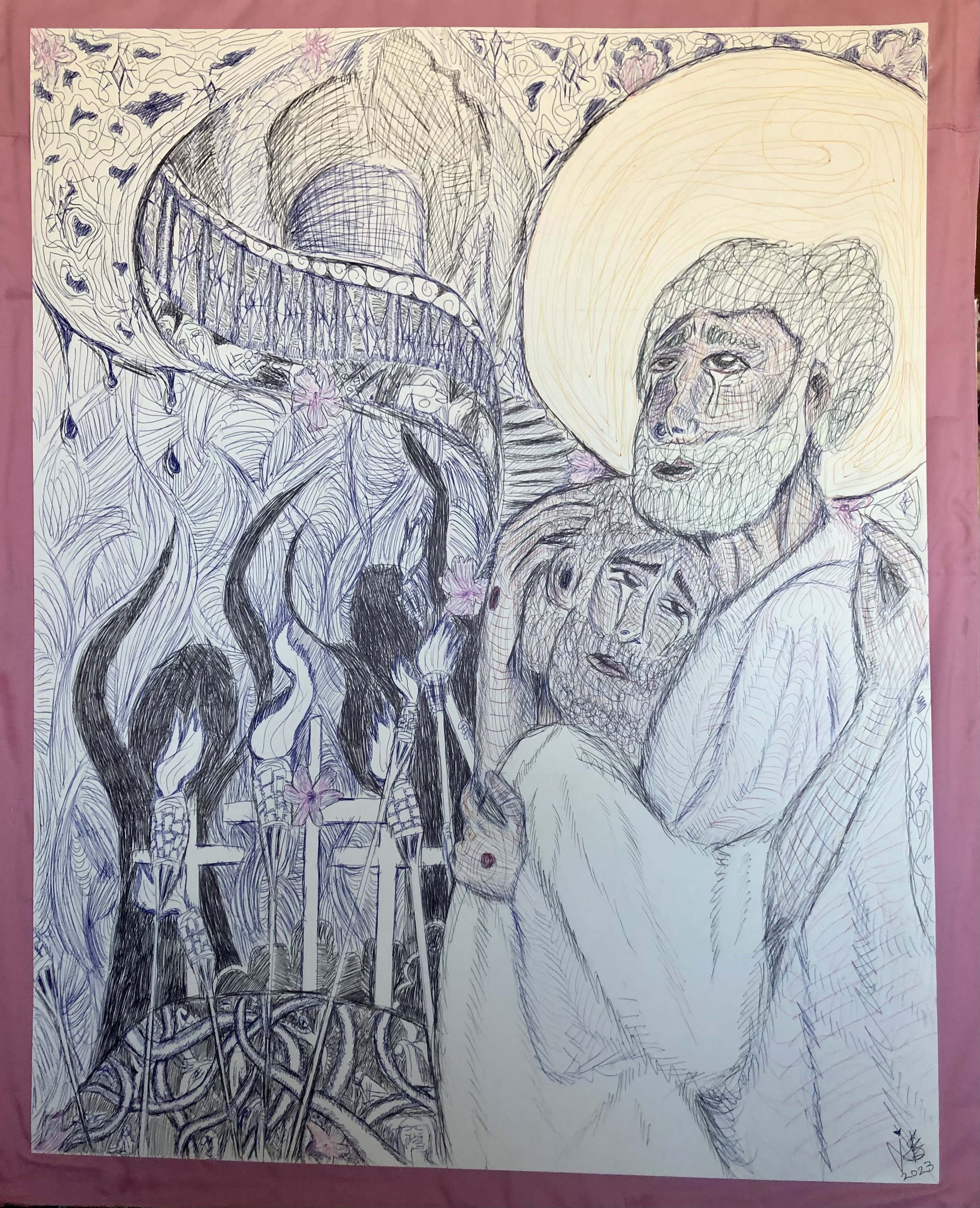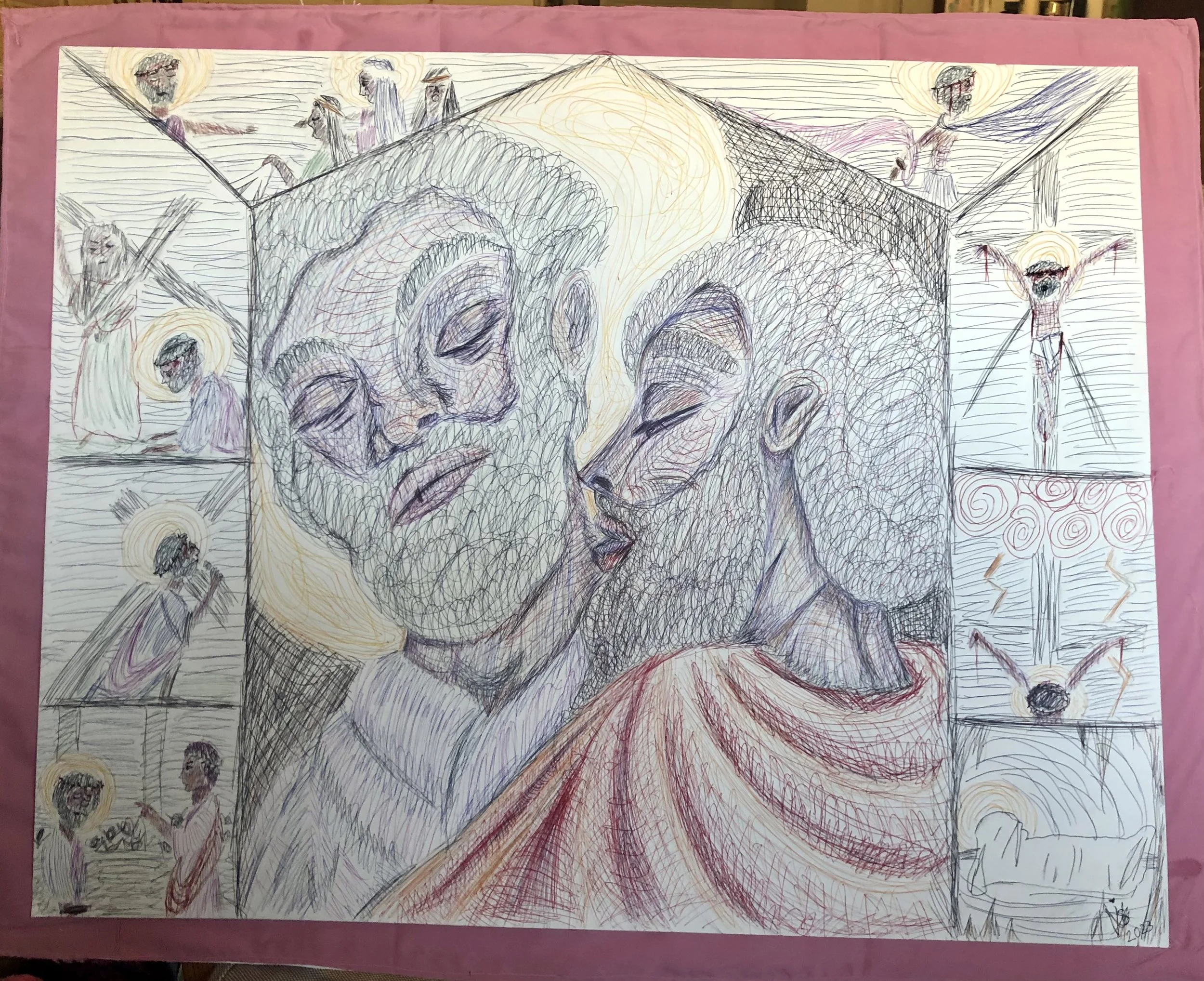Commentary on Eli, Eli, Lama, Sabachthani? Part 2 (Judas and Jesus)


*This is a continuation of part 1 of the commentary on Eli, Eli, Lama, Sabacthani?, the first part deals with the first two pieces in the series: David and Jonathan, and Abominable. If interested please read that post first.*
Whereas the first pair of works in this project drew from the story of David and Jonathan, the second pair is all about Judas. Originally i was continuing with the queer themes found in the first two, by depicting the moment of the passion when Judas betrays Jesus with a kiss. This is what my piece The Kiss depicts, along with 8 of the 14 stations of the cross as a border. I don’t actually have a lot to say about this piece. I’m not very fond of it. Most of what I want to say is about the second of the pairing: Forgiveness and Sorrow.
Forgiveness and Sorrow is my attempt at commentary on what happens to Judas, after he betrays Jesus, after he dies, and after Jesus raises from the dead and ascends into heaven. There are lines in the bible that say things along the lines of “the worst things will happen to he who betrays the son of man”. This piece is imaging what forgiveness would look like in spite of that, and in spite of that forgiveness, what those worst things are.
I like to imagine that Jesus forgave Judas, they travelled together for at least a few years, I don’t think it was all hate and spite during that time. However, I also recognize what the scripture says, and so does Jesus and Judas. That's what is being depicted here, this is a piece where Jesus and Judas forgive each other, but also recognize that wherever Jesus is going, Judas cannot follow. Like David and Jonathan, this is about a goodbye. This is a piece about grief.
In the background I’ve included my attempts at visual representations of grief, my grief, Judas’s grief, and Jesus’s grief. I’ve also included 11 purple hyacinths, flowers of forgiveness and sorrow, to represent the other disciples and the feelings they must have had throughout the passion and the days following.
In these renditions of grief I include a staircase (where it leads is up to you), figures in the midst of sorrow, shadow beings, the three crosses, a cave, and tiki torches. This last one is the reference to my own grief, as a person from Charlottesville. Unlike the previous piece where Judas wears red (meant to harken back to the devil), here Judas wears a white funeral shroud to signify his death and afterlife. The background is done in blue to mimic the blue and black clothing I see others wear at funerals (if you aren’t wearing black, you’re wearing dark blue).
In Peace,
Xi